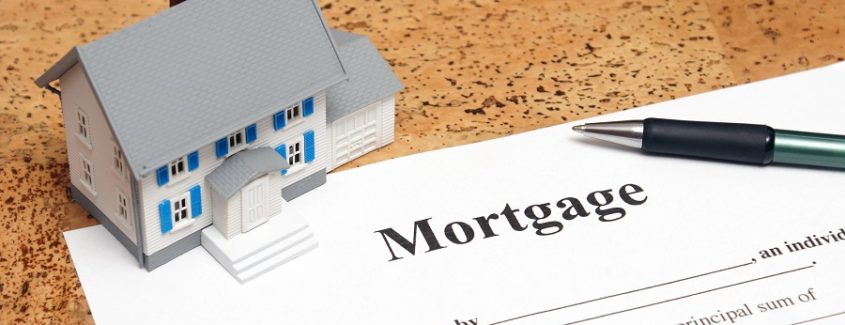
Refinancing a mortgage means paying off an existing loan and replacing it with a new one. There are several reasons why homeowners can make refinancings possible.
Get low interest rates
- Reduce the length of your mortgage
- Move from adjustable rate mortgages (ARM) to fixed-rate mortgages or vice versa
- Use your home’s capital to respond to financial emergencies, finance bulk purchases, or integrate debt
- The refinancing cost is 3-6% of the loan’s original mortgage, the search and property application rate must be assessed.
- So the landlord must determine whether refinancing is a wise financial decision.
Refinancing to reduce interest rates
One of the best reasons for refinancing is to cut interest rates on existing loans.
Historically, the general rule is that refinancing is a good idea. If interest rates can be cut by at least 2%. However, many lenders say the 1% savings are enough to stimulate refinancing.
Lowering interest rates, not only would it save you money, but will also help you raise interest rates on your home equity. This will reduce the size of your monthly payments.
For example, a 30-year fixed-rate mortgage has an interest rate of 5.5%. An interest rate of $100,000, and the main rate of $568. Reduce the same loan by 4.1% and reduce payments by $477.
Refinancing shortens the duration of the loan
When interest rates fall, homeowners sometimes have the opportunity to render another loan that doesn’t change.
Much in terms of monthly payments and lasts much shorter.
Refinancing a home’s 30-year fixed-rate mortgage from $100,000 from 9% to 5.5%. Could halve the mingle to 15 years and change the monthly repayments slightly from $805 to $817.
But if you’ve been spent 5.5% ($568) for 30 years, getting a 3.5% mortgage over 15 years. It will increase your payments to $715. Also, see what math and work are.
Refinancing will be an arm or fixed rate mortgage

ARM generally starts offering lower interest rates than fixed-rate mortgages.
But regular adjustments can lead to higher interest rates than those available through fixed-rate mortgages.
When this happens, switching to a fixed-rate mortgage will reduce interest rates and re-raise concerns about future rate hikes.
On the contrary, if interest rates go down, switching from a fixed-rate loan to ARM (monthly payments are less than a regular period mortgage).
This can be a reasonable financial strategy. Especially for homeowners who haven’t lived at home for more than a few years.
These landlords can reduce loan rates and monthly contributions. But they don’t have to worry about higher rates over the next 30 years.
As interest rates continue to fall, adjusting the ARM rates regularly lowers interest rates reduce monthly mortgage payments. This eliminates the need for refinancing every time interest rates fall.
On the other hand, if mortgage rates go up, it will be a reckless strategy.
Use stocks or refinancing to consolidate debt
All of these reasons for refinancing are financially sound, but mortgage refinancing can be a downturn in endless debt.
Homeowners, often enter the capital of the house to cover key expenses. Such as home renovations or the cost of their children’s college education.
These landlords may have reason to refinance the fact. Renovations will increase the value of their homes. And that mortgage rates are lower than the interest rates on money borrowed from another lender.
Another good reason is that mortgage interest is tax-free. These arguments may be true, but increasing the number of years owed mortgage debt. Is rarely a wise financial decision, spending $1 on interest to get a 30 cent tax break.
Also, note that since the Tax Cuts Act took effect. If you’ve purchased a home after December 15, 2017. The amount of interest-deductible loans has decreased from $1 million to $750,000.
Landlords
Many landlords refinance to consolidate their debt. At face value, it is recommended to replace high-interest debt with low-interest mortgages. Unfortunately, refinancing does not bring automatic financial caution.
Only when you’re sure that refinancing will get you out of debt can you resist the temptation to spend.
Most people used to spend high-interest debt on credit cards, cars, and other purchases. Did so again after refinancing when their mortgages gave them available credit.
This resulted in short-term four-fold losses, including a wasteful refinancing rate loss, a loss of shares in the home.
Additional, yearly interest payments on new mortgages, and repayment of high-interest debt once the credit card was fully utilized again.
Another reason for refinancing may be a serious financial emergency. If so, carefully investigate all funding options before taking this step.
If you do cash refinancing, you may be charged a higher interest rate on your new mortgage. Then the refinancing rate and the period when you don’t come up with the money.
One word
Refinancing can be a big financial move if it helps you pay fewer mortgages. Shorten your loan term, or build stocks faster. If used carefully, it can also be a valuable tool for managing debt.
Before refinancing, look at your finances and ask yourself; How long do I have to stay and how much money can I save to refinance?
Again, keep in mind that the refinancing cost is between 3% and 6% of the original loan amount. It can take years to recover costs with low-interest rates or short-term savings. So if you don’t plan to stay at home for a few years, the cost of refinancing can be negligible.
It’s also important, to remember that. Smart homeowners are always looking for ways to reduce debt, build stocks, save money and cancel mortgages. Taking cash from stocks when refinancing will not help you achieve any of these goals.

